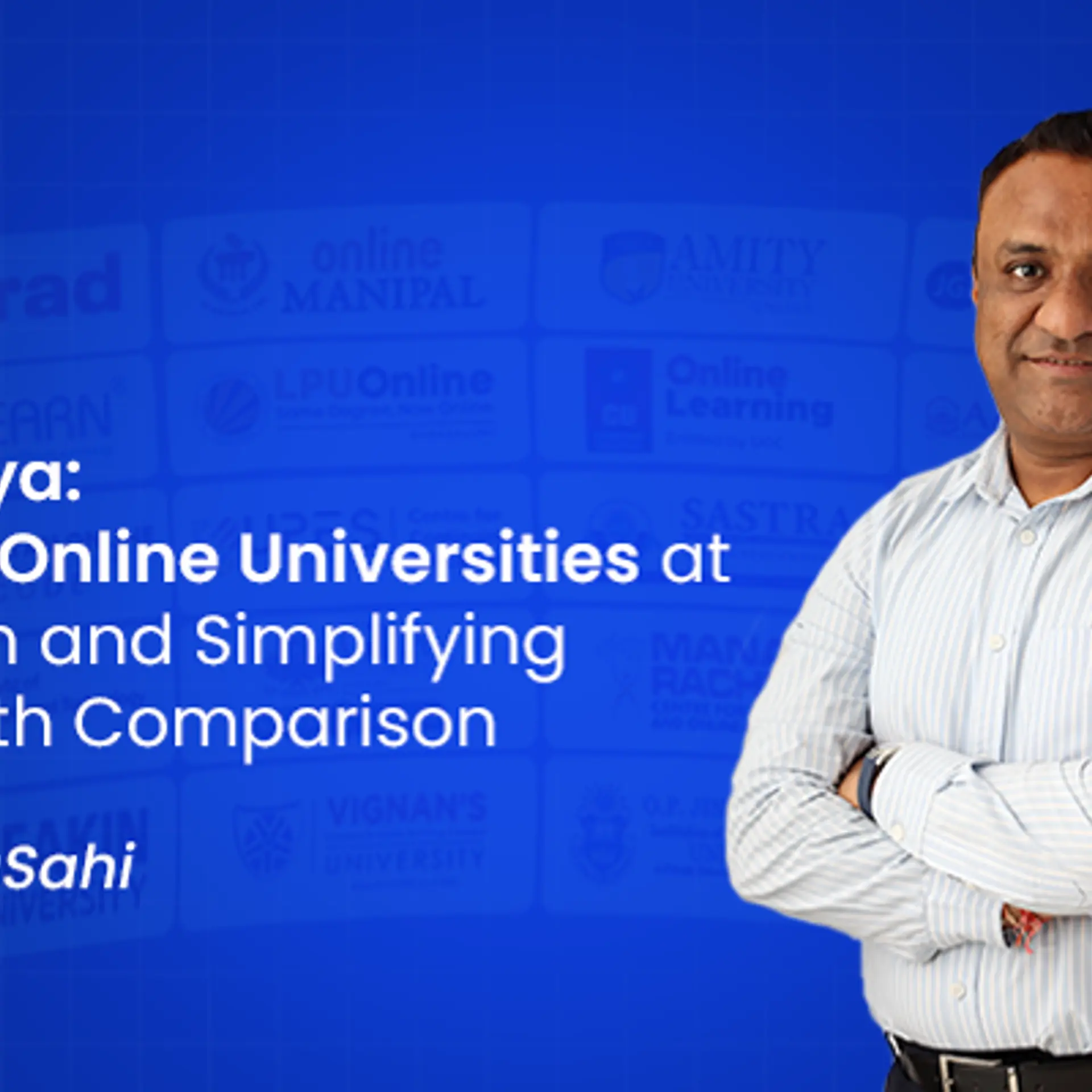‘Design is the layer between people and technology’ – user experience tips from Giles Colborne, author, ‘Simple and Usable’
Without a clear focus on design and user experience, a tech startup is just a vanity project, according to Giles Colborne, the author of '‘Simple and Usable’. Emerging economies like India are in a unique position to discover truly innovative ways of using technology.
Giles Colborne is the CEO of UK-based experience design consultancy cxpartners, and the author of Simple and Usable: Web, Mobile, and Interaction Design.

Giles is also a keynote speaker and masterclass leader at the upcoming DesignUp 2019 conference in Bengaluru, for which YourStory is the media partner. See our earlier coverage of DesignUp 2018 and 2017, and our d.Zen (‘Design Zen’) section for more resources on design.
Giles helps innovators and product managers understand what simplicity can do for efficiency, return on investment, and identifying future design directions.
In this interview, he shares with us his insights on customer focus, the importance of listening and conversation, and trends in interface design.
YourStory: In a world of information overload and unending distractions, what do you see as the key role of designers?
Giles Colborne: I’m fascinated by the creation of simplicity – how to take a complex world and make sense of it. I think that is the role of the designer – to help someone make sense of their situation.
The trick is to keep yourself as a designer in the background. You need to help the user to drive without snatching the steering wheel out of their hands. You’re placing the roadsigns, setting the street lamps, and painting the lines on the road.
If you’re good at your job, people aren’t thinking about your design. They’re dreaming of their destination.
YS: How should techie founders deepen their understanding of design so as to offer better products/services? What makes for a good partnership between tech and design teams?
GC: I think you have to appreciate that people are part of the technological system that you’re designing. And they’re not a part that you can swap out or upgrade. And if it doesn’t work for people then it doesn’t work at all.
So you need to understand people – deeply – or your tech startup is just a vanity project. Design is part of that, because design operates as the layer between people and technology - the way your technology looks to users, the way it works, the way it behaves, these are all things that help or prevent users from getting the technology to work.
So I’d say that the thing the techie and the designer have in common is the user. That should be the topic of conversation between you. If you’re always asking ‘What do we know about our users?’ and ‘Is this the best way to help our users?’ then you’ll have a great conversation, a great partnership, and a great outcome.
YS: What design lessons do you think emerging economies can share with the rest of the world?
GC: No matter what country you go to, people seem to judge how advanced they are in comparison to Silicon Valley. They say things like ‘We’re a couple of years behind’. What I find is that local technology adoption evolves to suit local needs and conditions.
I remember travelling around rural Malaysia back when 3G first emerged and I was surprised to find most people using 3G to connect to the Internet. In the UK that was a luxury. In Malaysia, they didn’t have such a dense network of landlines and had just gone straight to using mobile networks.
Emerging economies aren’t weighed down by the old infrastructure or institutions of established economies. So, I think people should look to emerging economies to discover truly innovative ways of using technology.
YS: As we come to the close of 2019, what are three key emerging design trends you see in 2020?
GC: I’m going to pick just one. I think we’re getting to the point where people just expect interfaces to adapt to them. The idea that you might, by default, arrange a list of items by anything other than ‘relevance’ is going to seem quaint in a few years’ time.
I don’t expect Netflix to look the same on a friend's TV as it does on mine. Why would I?
What that does for people’s sense of shared experience and community is something that concerns me. We need to find that balance between personal and communal.
YS: What are three key principles for keeping design simple while also making it effective for diverse users?
GC: First, involve diverse users when you’re developing your design and ideas: watch them, listen to them, visit them, experience their lives. The more diverse the audience, the more you have to focus on the solutions that work for everyone.
Second, don’t try to do too much. Fix the big problems really well before you get distracted by the detailed problems. You’d be amazed how important it is to reduce the number of clicks in an interaction, much more important than adding a flashy new feature.
Third, own your decisions. Often, when we encounter a difficult decision, someone will say ‘We’ll make it an option – let the user decide’. What that means is ‘Let’s give up and leave it to the users to fix the problem themselves’. That’s an extra burden for the users, and they don’t always find the optimal solution. Design is about making decisions.
YS: What do you see as the connection between art/aesthetics and design?
GC: Art and aesthetics are about conveying a state of being, an experience, in the most raw, honest way possible. We love stories, or paintings, or music because those things help us expand our sense of the world or give us a way of connecting to ideas that are deep within us.
Design often puts those same tools – words, images, sounds – in the service of something more practical, like an online bank. But there’s a link between the design language you choose, and the artistic language that we immerse ourselves in every day.
YS: As the offline and online worlds converge, how can designers prepare better seamless experiences for consumers?
GC: I’m not sure we want our lives to be seamless. We don’t want to be confused about which world we’re living in. We need to think about the transitions between one world and the next.
Look at how we got that wrong in the past. Email was never designed for the world of mobile internet. The fact that email can arrive at any time can be invasive – work pursues people when they’re sitting down to dinner with their family.
I think we should learn from those mistakes and think hard about how we make better transitions between worlds – home and work; digital and physical; online and offline. Designers shouldn’t try to eliminate the seams; they should try to design them elegantly.

YS: Which are your other favourite design festivals around the world, and what makes them special?
GC: What I love is the variety of conferences I get to experience. Each country has its own design culture and you realise that the place of design in a society tells you a lot about that society’s values and beliefs – whether they see designers as artists, or social engineers, or innovators, or something else.
I’m involved with the IA Conference, which is an amazing community in the US which does a great job of promoting new designers and coaching them to speak at a stellar international conference. I remember meeting one of last year’s co-chairs when she attended the conference as a young designer for the first time – and stood on stage doing karaoke. Now she’s a community leader. If I had to pick one conference I think it would be that one.
YS: What are three books designers must have on their bookshelf?
GC: Well, obviously my book, Simple and Usable! I tried to include stories and ideas that would help designers in all kinds of situations.
But aside from that, the books I look at most often are Edward Tufte’s Envisioning Information. It’s not a book that you can dip into. Each chapter is really a lecture, wonderfully illustrated, and thoughtfully articulated.
The last book on my list isn’t about design at all, it’s called Crucial Conversations and it’s a book about how to handle conflict. Designers often find themselves at the centre of power struggles, and this book shows you how to handle those situations and find solutions without fights or power plays.
(Edited by Evelyn Ratnakumar)










